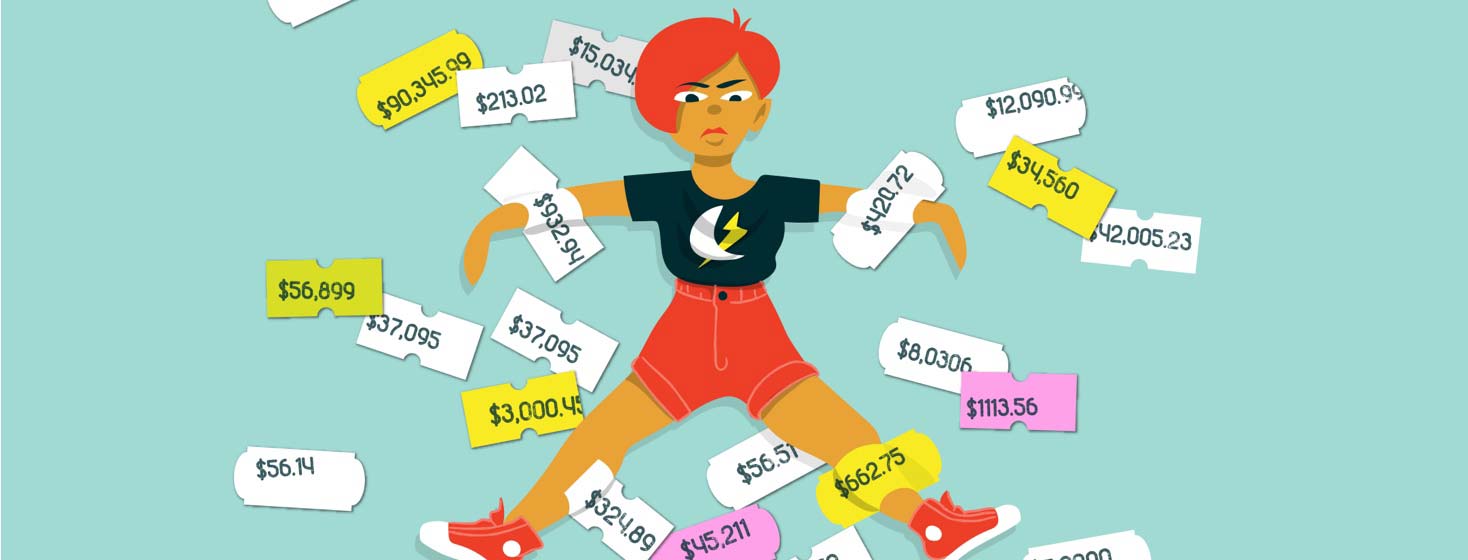Paying the Disability Tax
People with endometriosis pay more for essentials than people without it.
Exhibit A: Many of us are paying period tax (menstrual products are still taxed in 27 states).
Exhibit B: Those who buy products marketed as being traditionally “female” (don’t even get me started on binary gender-based marketing) are paying what’s known as a pink tax.
Look at hygiene products: those labeled as “feminine” with floral scents and pink and purple packaging are more expensive than “masculine” ones with spicy scents and black, blue, or red packaging. If you purchase clothing traditionally assumed to be for women (blouses, skirts), it costs more than the equivalent items marketed as men’s clothing (shirts, pants).
This becomes most egregious when it’s a product with little difference, like razors, but the product is placed in either a blue or pink package; the pink package often costs more.
Exhibit C: Folks with chronic illness and disability pay what some disability justice activists have dubbed the “disability tax,” meaning that living life is, in general, more expensive.
Take, for example, the special diets many must adhere to. Those organic fruits and veggies, plant-based pints of milk, gluten-free crackers, and grass-fed meats are much pricier than their non-organic or gluten-filled equivalents.
Many of us still do online shopping as much as possible, use Instacart for grocery shopping, or utilize store pick-up. The fees associated with these methods add up.
The financial strain of treatment
Think about all of the medical equipment you might have: heating pads, cold packs, a TENS unit, a cane, a walker, a wheelchair, cloth pads, period underwear, incontinence pads, cooling sheets, pelvic PT dilator, special pillows, seat cushions, and water purifiers, just to name what comes to my mind. Other folks can spend their money on coffee, expensive accessories, or weekend trips.
Of course, we also take supplements and medications, especially when we have comorbidities like mast cell activation syndrome or migraine. Right now, I spend $350 a month on supplements and medications. In the past, I’ve had to forego these items when my income wasn’t robust enough, to my detriment.
Many of us wear special clothing that helps us work around endo bloat or heavy bleeding. Read Laken’s excellent article about creating a capsule wardrobe here.
Some of us have spent hundreds of dollars on questionable doctors, supplements, or products in hopes of getting better but found no relief.
We may have frequent visits to many different doctors: physical therapists, gynecologists, surgeons, chiropractors, therapists, nutritionists, neurologists, or our primary care physicians. Some people only see a doctor once a year for their physicals. Imagine what that is like!
Our care includes expensive procedures like surgery, CT scans, MRIs, and ultrasounds. Many people cannot afford these procedures or have insurance that doesn’t cover them. These folks have their unique tax: living with chronic pain and illness without the benefit of diagnosis and treatment.
The cost of healthcare
Over the course of my life, I have been in and out of the financial means to afford expert care and treatment.
I paid off my first two surgeries, which cost me thousands of dollars, for several years with the help of a payment plan with the surgical center.
In the 10 years between my first two surgeries and my second two, I had variable income due to going through a divorce and trying to find a stable and high enough income to allow me to receive care. During this time, I lived with chronic pain and undiagnosed mast cell disease, dysautonomia, and migraine, with only the help of a few supplements and NSAIDs.
I didn’t regularly visit a gynecologist or PCP for several years. I could afford occasional doctor visits and therapy when my income increased and became more stable.
Once I got married again in 2019, I received much better care. My wedding coincided with the beginning of horrific endometriosis symptoms, multiple ruptured ovarian cysts, and the need for two surgeries.
I’m thankful that I was under my ex-wife’s insurance plan at the time because I could pay under $300 for each surgery, and all of the imaging I needed (multiple MRIs, CT scans, and ultrasounds) was covered. I also saw my mast cell doctor every six weeks to drill down how to work with my flares.
I separated from my ex in April, and our divorce will be final soon. One of the most challenging pieces of getting divorced was knowing that my healthcare costs would rise significantly again and that I would not be able to enjoy the same level of care I had while on her insurance plan.
My monthly premium costs rise by $364 a month (more than $4,000 annually). Copays, prescriptions, imaging, and therapy will cost significantly more. A large chunk of my income goes toward housing, food, and health care. Hence the disability tax.
I’m hopeful that I will not need any further surgeries, but I can’t guarantee that outcome. Endometriosis can recur after oophorectomy (removing ovaries) and mast cell diseases are often progressive, so I’m scared about how much longer I’ll be in a stable place and able to work enough to afford all of the things I can now.
But without being able to afford the insurance, care, prescriptions, and supplements I need, my quality of life will decrease. It’s a vicious cycle and I know I am more privileged than many.

Join the conversation